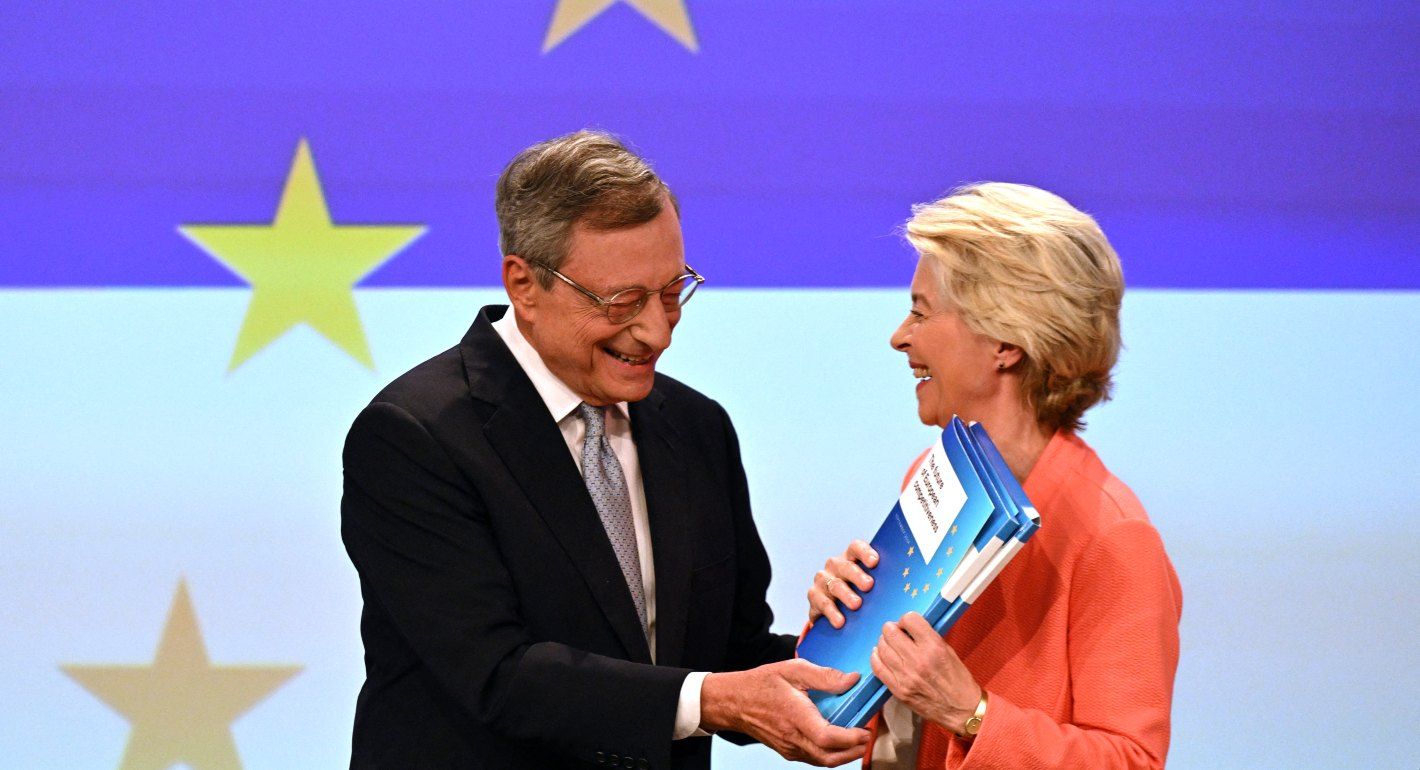Americans hearing about the spate of European reports on the single market, competitiveness, or security and resilience may roll their eyes. Talk to them about open strategic autonomy, anticoercion instruments, or de-risking, and the skepticism only becomes more visible.
This disregard for Europe’s processes is the flip side of European concern about efforts by the administration of U.S. President Donald Trump to “flood the zone” with executive orders or engage in trade negotiations through tariff threats published on social media.
Many Americans see Europe as overly regulated and slow moving; many Europeans see the United States as unchecked and unbalanced. The old transatlantic order based on U.S. leadership within an effective, rules-based, multilateral framework is breaking down at the interface. The question is which side of the Atlantic is likely to come out stronger from this interaction.
Few are eager to place their bets on Europe. Like it or not, it seems easier to wager on the dynamism coming out of the United States, at least for the short term.
Placing the easy bet would be a mistake. Europe may be slow in pulling itself together, but it has a knack for making epochal changes by working through huge stacks of small decisions. The raft of reports and the flurry of jargon are all part of the process of putting the necessary pieces into place.
The completion of the European single market is a good illustration. The European Community was sclerotic in the early 1980s, particularly when contrasted with the United States under former president Ronald Reagan or economic competition from Japan. To complete Europe’s internal market, Europeans had to implement lots of small but thorny changes. They had to agree on their common finances, on how they would make collective decisions, and on how much decisionmaking they could delegate to national and regional authorities or public and private agencies. They also needed to liberalize capital flows while stabilizing exchange rates.
Reports by former EU officials Lord Cockfield, Tommaso Padoa-Schioppa, Paolo Cecchini, and Jacques Delors peppered with jargon about nontariff barriers to trade, a new approach to technical harmonization and standards, irrevocably fixed exchange rates, and macroeconomic convergence showed the way. The results were not perfect, but they were impressive. Few observers on either side of the Atlantic could have imagined in the early 1980s the trading juggernaut the EU would represent four decades later.
Of course, with the urgency of the current moment, the EU does not have another four decades to pull itself together in the rapidly changing global environment. The fact that this was also true in the early 1980s is no reassurance. Europe survived the past; the future is still uncertain. And everyone can see that long-standing projects—to integrate European defense industries; complete a capital markets union, green and digital transitions, and enlargement; or preserve liberal democracy—face deeply entrenched opposition.
The only retort is to point to the power of process. Europeans excel at bureaucracy, which sounds like a bad thing until you think about how the invention of bureaucracy—and not the imperative for fighting wars—transformed feudal monarchies into modern states.
The EU is capable of sudden and profound shifts once it commits to specific objectives. It is also capable of acting with determination. It created the Schengen Area for passport-free movement for citizens of many European states and managed to hold onto and even enlarge that area despite the 2015 migration crisis. And it found a way to stabilize intra-European exchange rates by creating a single currency and then pushed hard to ensure that currency held together and expanded—all despite the 2008 financial crisis, the 2009 sovereign debt crisis, the COVID-19 pandemic, and Russia’s 2022 full-scale invasion of Ukraine.
The EU enlargement process is equally dynamic. Each expansion of the European project has brought in controversial member states. Each has forced Europeans to adapt their common finances and decisionmaking processes. Not every new addition was successful. The British ultimately left; relations between the EU and Hungary are problematic. But countries are eager to join, and even the most challenging member state governments show little appetite for leaving.
What Europeans need now is an EU that can act like a great power—not just bigger and stronger but also more autonomous, integrated, and decisive. That requirement is painted across the recent raft of reports and highlighted in the jargon they introduce. And Europeans are coming around to that project.
A new EU is emerging through shifts in the focus on European competitiveness to relax restrictions on state aid, coordinate the use of trade instruments and industrial policy, allow for “buy European” provisions in public procurement, and allow access to non-EU countries with special relationships. These do not sound like the building blocks for revolution, but they will free Europe from much of its economic dependence on the United States and set the stage for Europe to provide for its own security as well.
Whether European leaders will embrace this vision for Europe’s future depends on whether and to what extent they acknowledge the urgency of the moment and the need for action. The lessons of the past suggest there is no room for complacency, as the reports spell out.
Undoubtedly, European leaders must contend with an imperfect, slow, and painstaking process; complicated rules; cumbersome decisionmaking; and conflicting interests. What makes Europe a good bet is that the EU is at least pointed in the right direction. There are well-founded doubts about whether that is the case for the United States.
Unlike the current destruction of many of the components of America’s might from within, European leaders are focused on laying the foundations to strengthen their instruments of power. They know where they need to go and what they need to do to get there. And the world has seen what they can accomplish.




